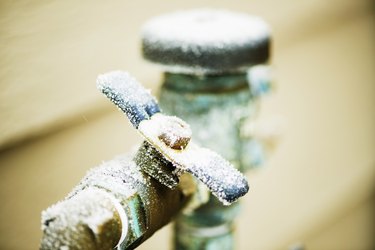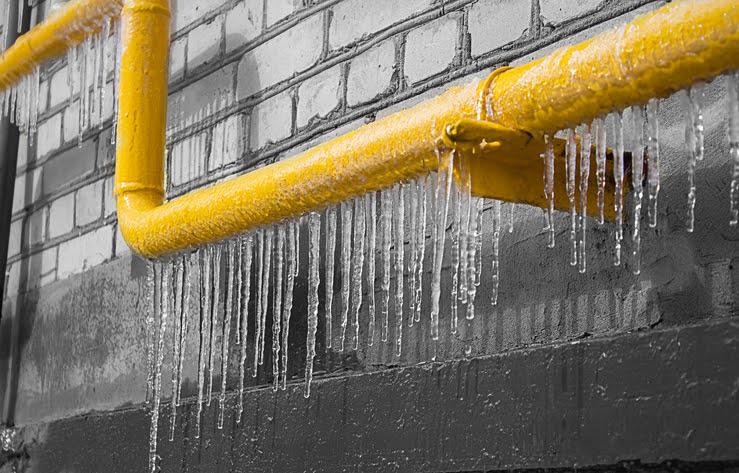Everybody maintains their own individual rationale on the subject of 6 Ways to Prevent Frozen Pipes.

Cold weather can wreak havoc on your plumbing, specifically by freezing pipelines. Below's just how to stop it from occurring and what to do if it does.
Introduction
As temperatures decline, the threat of icy pipelines rises, possibly causing pricey repair services and water damage. Understanding how to prevent icy pipelines is essential for home owners in cool climates.
Comprehending Icy Pipelines
What triggers pipelines to ice up?
Pipelines ice up when revealed to temperatures below 32 ° F (0 ° C) for prolonged durations. As water inside the pipes freezes, it increases, taxing the pipeline wall surfaces and possibly causing them to break.
Threats and problems
Icy pipes can result in water system disruptions, building damage, and pricey repairs. Burst pipelines can flood homes and trigger substantial architectural damages.
Signs of Frozen Piping
Determining icy pipes early can stop them from breaking.
How to identify icy pipelines
Search for decreased water flow from taps, unusual odors or noises from pipelines, and visible frost on revealed pipes.
Prevention Tips
Insulating at risk pipes
Cover pipes in insulation sleeves or make use of heat tape to safeguard them from freezing temperature levels. Concentrate on pipes in unheated or external locations of the home.
Home heating strategies
Keep interior rooms effectively heated up, specifically areas with plumbing. Open cabinet doors to enable warm air to circulate around pipelines under sinks.
Securing Outside Pipes
Garden tubes and outside taps
Detach and drain garden hoses before winter. Install frost-proof spigots or cover exterior faucets with protected caps.
What to Do If Your Pipelines Freeze
Immediate activities to take
If you suspect icy pipes, keep taps open to relieve pressure as the ice thaws. Use a hairdryer or towels soaked in warm water to thaw pipelines slowly.
Long-Term Solutions
Structural modifications
Consider rerouting pipes far from outside walls or unheated locations. Include extra insulation to attics, basements, and crawl spaces.
Upgrading insulation
Buy high-grade insulation for pipes, attics, and wall surfaces. Proper insulation assists maintain regular temperature levels and minimizes the threat of frozen pipelines.
Verdict
Preventing frozen pipelines needs positive procedures and fast feedbacks. By understanding the reasons, indicators, and preventive measures, property owners can shield their plumbing during winter.
5 Ways to Prevent Frozen Pipes
Drain Outdoor Faucets and Disconnect Hoses
First, close the shut-off valve that controls the flow of water in the pipe to your outdoor faucet. Then, head outside to disconnect and drain your hose and open the outdoor faucet to allow the water to completely drain out of the line. Turn off the faucet when done. Finally, head back to the shut-off valve and drain the remaining water inside the pipe into a bucket or container. Additionally, if you have a home irrigation system, you should consider hiring an expert to clear the system of water each year.
Insulate Pipes
One of the best and most cost-effective methods for preventing frozen water pipes is to wrap your pipes with insulation. This is especially important for areas in your home that aren’t exposed to heat, such as an attic. We suggest using foam sleeves, which can typically be found at your local hardware store.
Keep Heat Running at 65
Your pipes are located inside your walls, and the temperature there is much colder than the rest of the house. To prevent your pipes from freezing, The Insurance Information Institute suggests that you keep your home heated to at least 65 degrees, even when traveling. You may want to invest in smart devices that can keep an eye on the temperature in your home while you’re away.
Leave Water Dripping
Moving water — even a small trickle — can prevent ice from forming inside your pipes. When freezing temps are imminent, start a drip of water from all faucets that serve exposed pipes. Leaving a few faucets running will also help relieve pressure inside the pipes and help prevent a rupture if the water inside freezes.
Open Cupboard Doors
Warm your kitchen and bathroom pipes by opening cupboards and vanities. You should also leave your interior doors ajar to help warm air circulate evenly throughout your home.

Hopefully you liked our piece on How To Avoid Freezing Pipes. Thanks for taking a few minutes to read our article. Do you know about somebody else who is sincerely interested in How to prepare your home plumbing for winter weather? Please feel free to promote it. I am grateful for your time. Come back soon.
Schedule Here